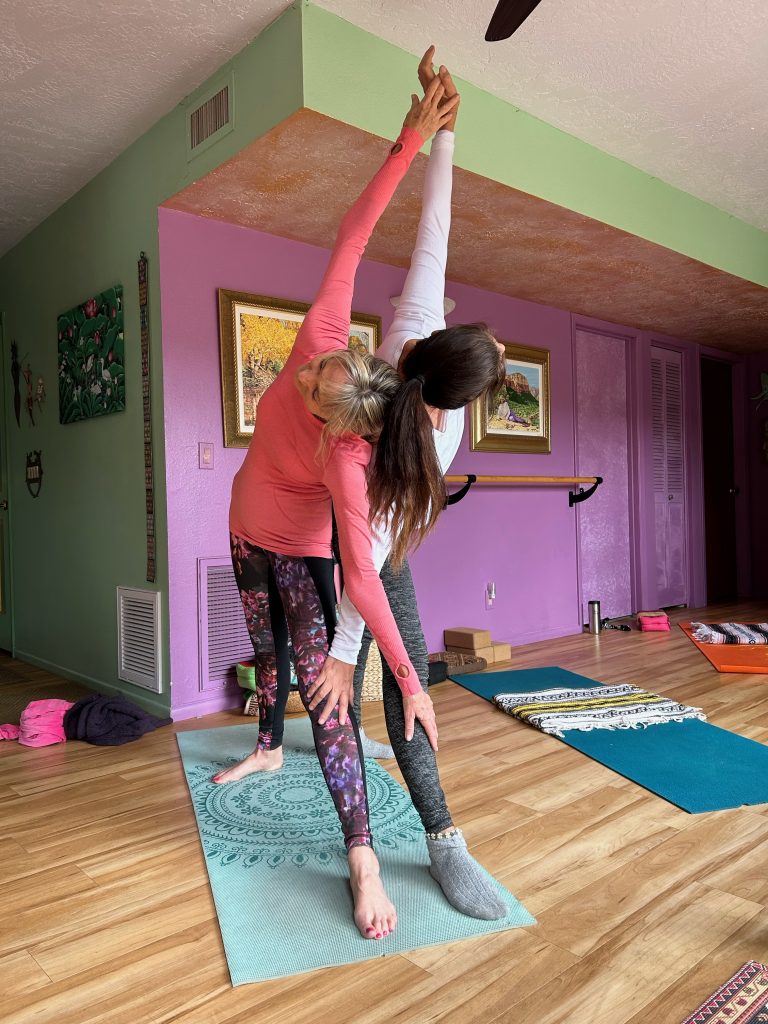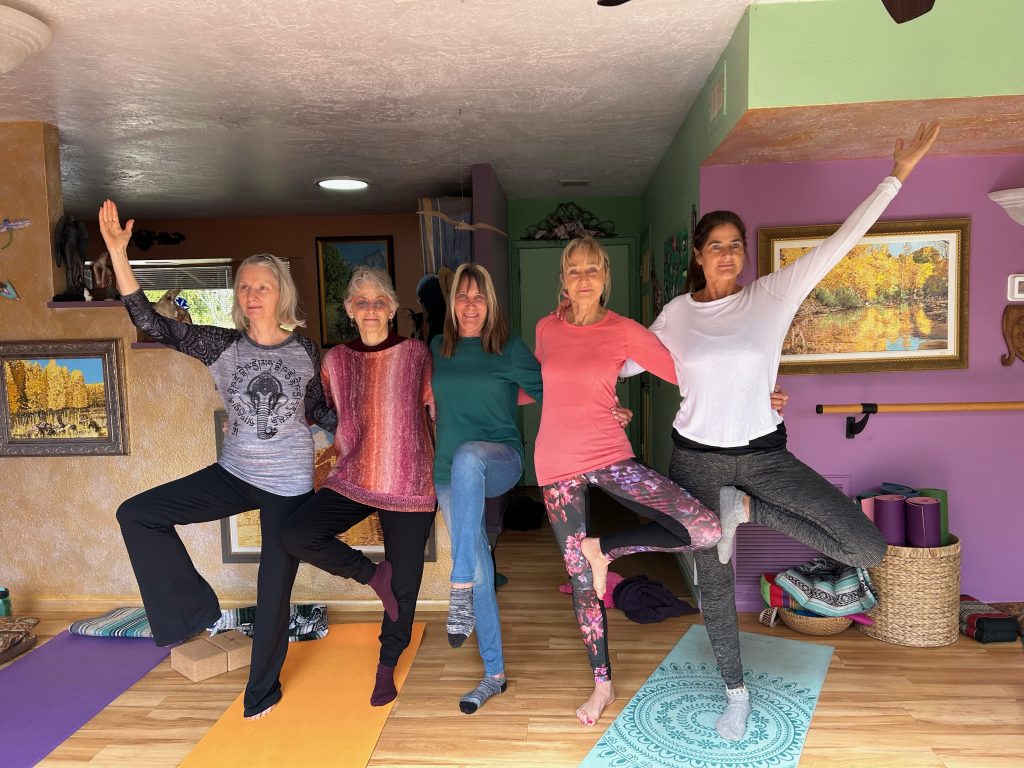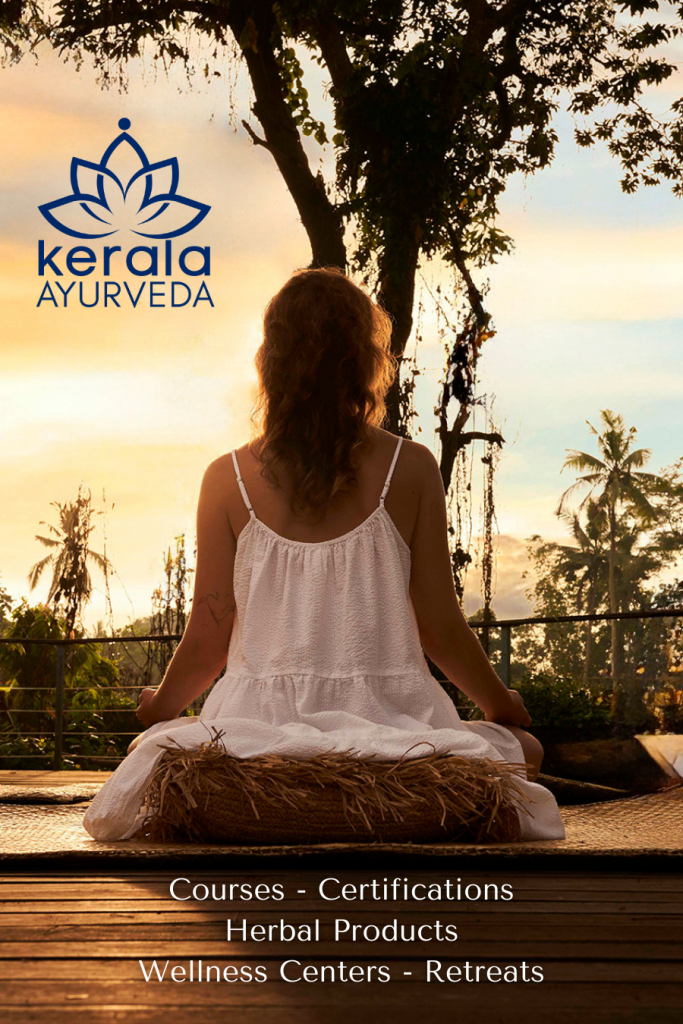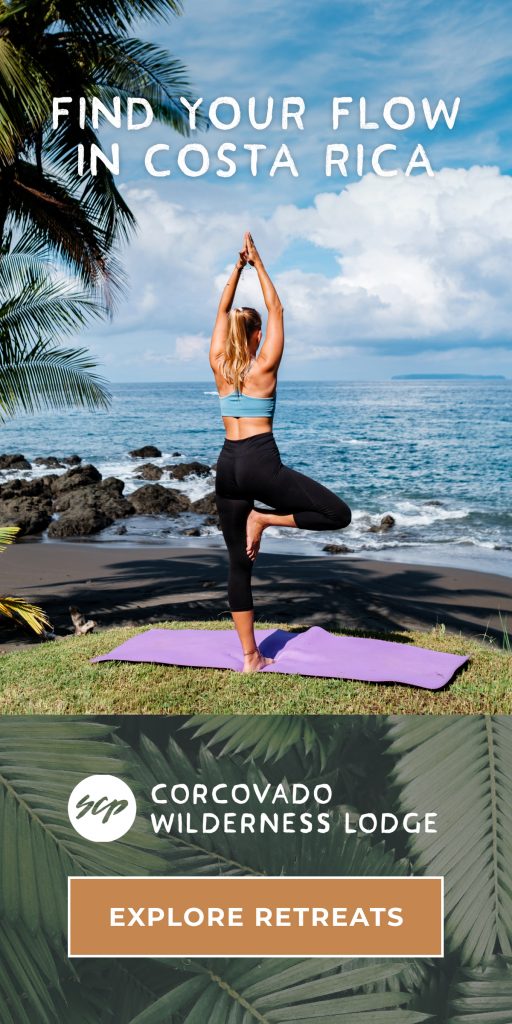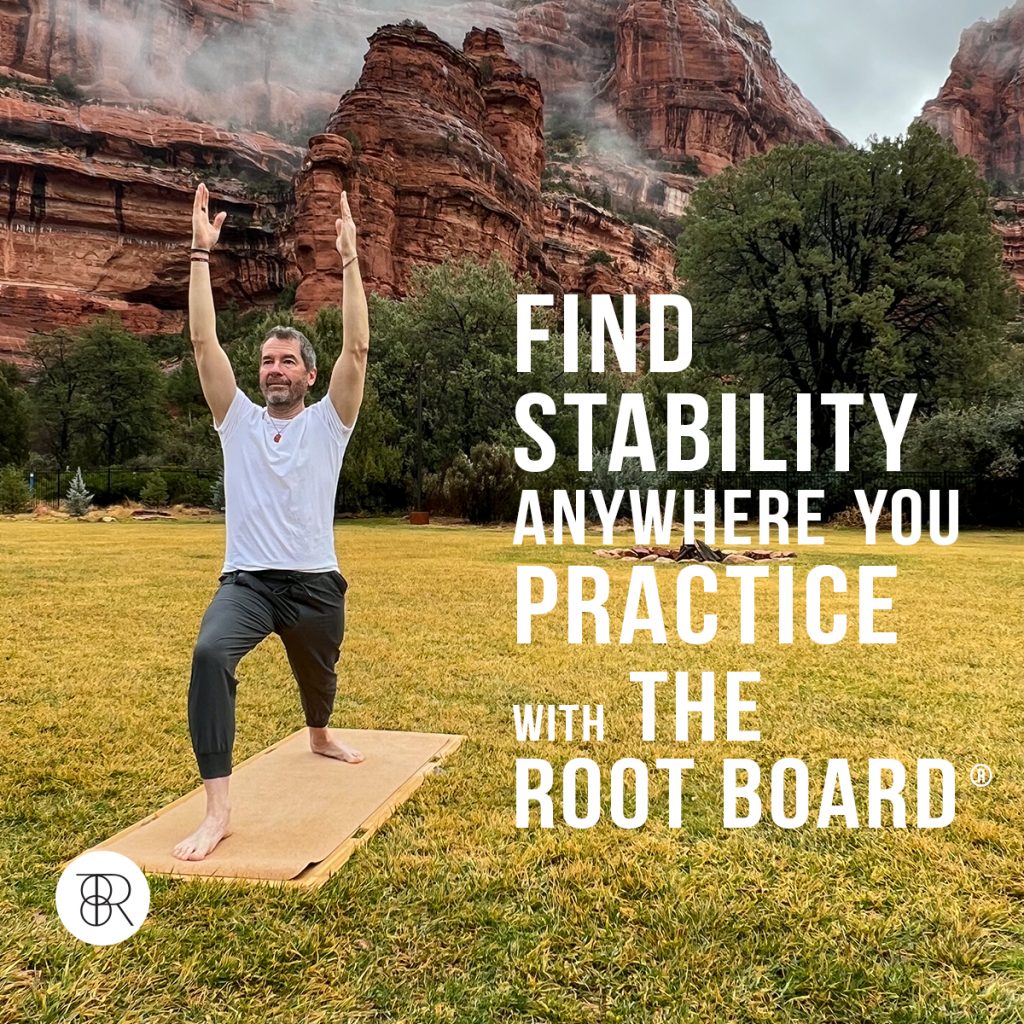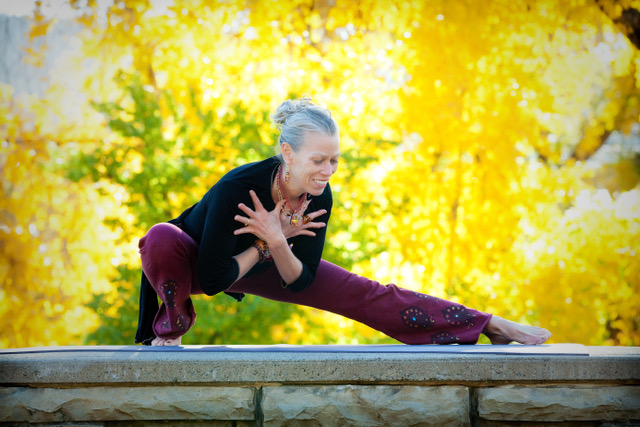
Apr 10, 2023 | Sedona Yoga Festival Teacher Feature
The New Paradigm in Healing Body-Mind-Spirit and Planet
by Dr. Keneen Hope McNiven D.C., Founder of Hope, Grace and Gaia Transformation Retreats and Hope Chiro Yoga
How has life shaped you? What is your relationship with gravity, which is a form of Grace?
According to Liz Koch, author of the Psoas Book, “Gravity is a cohesive, graceful and loving support between heaven and earth. Gravity informs the rise and fall of the tides, our cells and the relationship between the earth and the sun. It is responsible for the health of our bones, joints and nervous system, as well as for optimal brain health and well-being. To engage and feel gravity deeply, is to also embody a deep sense of Grace, of being lovingly held.”
Fall from Grace
Do challenging residues from the past burden your body, mind, or spirit in the present? Our posture, spine, muscles and fascia contract with and reflect unresolved stresses. Some of the “shapes” we inhabit reflect our fight, flight, freeze and fawn responses to previous stress or trauma.
Additionally, some of the shapes are much more subtle and reflect memories of needing to duck, dodge, brace or protect our vulnerable underbelly. All these postural reactions or shapes contribute to back pain, joint pain, stress, fatigue, sleep loss and PTSD, along with a host of therapeutic issues that many of us experience in yoga. On and off our mats these shapes and disconnects from gravity or Grace impact our well-being and the embodiment of our awakening as well. The unconscious energetic memories and trapped energy they carry also have an impact on our relationships and communities.
Call of Grace
When we learn how to “re-shape” ourselves, recognize and honor the wisdom and messages inherent within our posture, pain and health challenges, then they become a graceful guide to optimal healing and recovery. A profound sense of Grace infuses us when we befriend gravity and re-align physically and spiritually between heaven and earth. We become healthier, emotionally authentic and enjoy more optimism, hope, trust, peace and joy. As we reshape the past and embody more presence, we enjoy a profound connection to our true nature depths, and our lives, health and actions are Grace-filled.
Hope, Grace, and Gaia
“One who has health has hope, and one who has hope has everything.” – Thomas Carlyle
When we resonate from embodied Hope and Grace, we radiate enhanced health and we emanate an abundance of vitality and awakened consciousness. The more Grace-filled we are, the more “fully human and fully divine” we are. We feel part of a oneness that includes all of reality, animate and inanimate, and from which we are not separate. Our relationships, communities, politics and our planet reflect this evolution, and also reverberate with cooperative synergy and wholeness. This Non-Dual “Gaia consciousness” is the realization that we are all truly one unified Being.
Learn more about the connection between personal awakening and healing with Dr. Keneen Hope McNiven D.C. in person at SYF April 27–30! Passes available here.
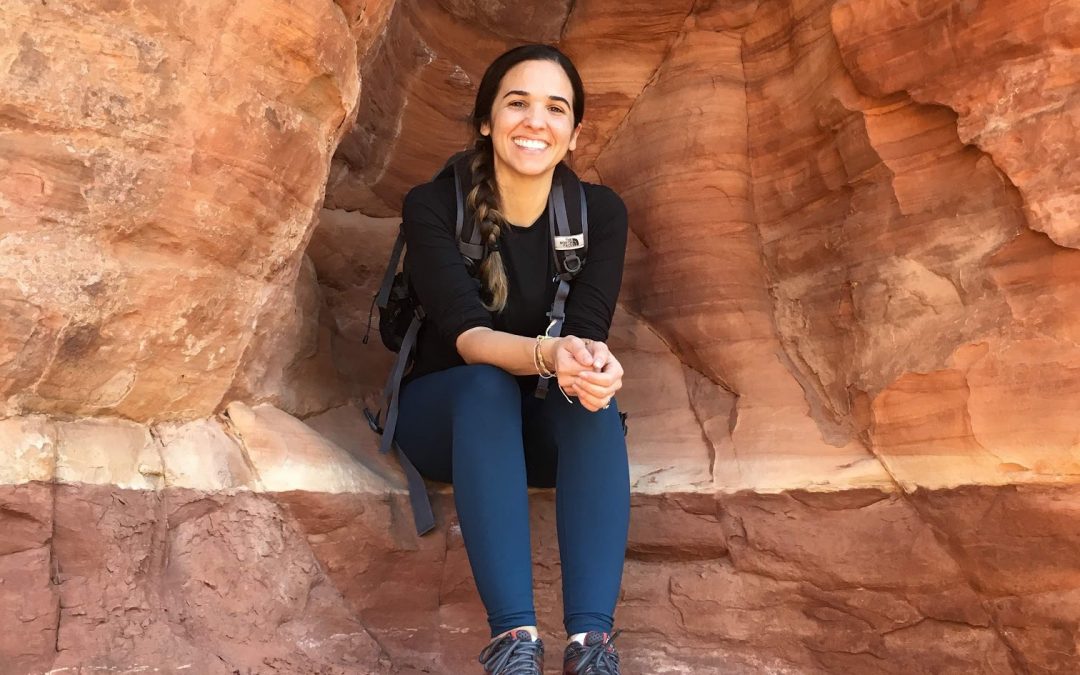
Apr 10, 2023 | Sedona Yoga Festival Teacher Feature
Using Polyvagal Theory to Attune to Your Nervous System
By Nina Bratcher, LCSW, Owner of Bay Area Therapy Services
Every moment, of every day, in every interaction, our autonomic nervous system (ANS) is moving us toward connection or protection. Have you ever noticed walking into a room and feeling a sudden sense of dis-ease? It is likely your ANS picked up on information that was interpreted as threatening to your overall well-being. This information could be coming from what you experience through the 5 senses, from an internal thought or sensation, or from cues of dysregulation in the emotional states of others. The mind and body are interconnected and in constant communication with one another. While the body physiologically experiences a state of being, the mind generates a story. Deepak Chopra said it best when he stated, “The body and mind are like parallel universes. Anything that happens in the mental universe must leave tracks in the physical one.”
Understanding how the ANS works is crucial to understanding your emotional self and why you react in the ways you do. Let’s first breakdown the ANS. It consists of 2 branches, the sympathetic and parasympathetic. Many of us are familiar with the concept of the “fight or flight” response. This is part of the sympathetic branch. When under stress, the sympathetic branch is activated, mobilizing us fight or flight to protect ourselves. The parasympathetic branch is where our relaxation response is housed. The vagus nerve, which starts at the brain stem, branches up into the face connecting to our sensory organs and wanders down through the body connecting to our vital organs including the heart, lungs, stomach, intestines, pancreas, etc.
It is through the vagus nerve that the body and brain communicate back and forth to one another. This is where the term “gut feeling” comes from. This nerve plays a crucial role in activating the parasympathetic branch.
Polyvagal Theory, introduced in 1994 by Dr. Stephen Porges, posits that the autonomic nervous system consists of a hierarchy of physiological states between the 2 branches. According to polyvagal theory, there are 3 nervous system states that have developed over time. The most evolved is the ventral vagal state, housed in the parasympathetic branch. In this state our system is at ease and functioning well. There is a sense of safety and we are able to connect with ourselves and others. The second response, a bit older in time, is fight or flight. This response is housed in the sympathetic branch and mobilizes us to take action to protect ourselves in the face of danger.
For our distant ancestors who lived during the Stone Age, this response was necessary for day to day survival. The third and most primitive response is the dorsal vagal response housed in the parasympathetic branch. When we are unable to protect ourselves through social connection or by fighting or flighting, we drop into a state of freeze. In this state, we become immobilized and unable to take action to protect ourselves. This state is necessary at times and does provide respite from the emotional overwhelm that can occur in sympathetic.
Each of these ANS states brings a cluster of emotions and sensations that reflect what the state is designed to do. For example, in a ventral state we may feel at ease, relaxed, curious, grounded, allowing us to connect with others and access creativity. In sympathetic, we may find ourselves feeling activated, on edge, alert, restless, angry, inflamed. Sensations might include increased heart rate, labored breathing, temperature changes, unsettled stomach, tension in the chest, muscle tightness. In a dorsal state, we often feel shutdown, disconnected, withdrawn, numb. Intuitively, the human body knows how to navigate its way back to ventral.
However, because we live in a chaotic world where safety is not guaranteed, there may be times when the system is overloaded and gets stuck in a sympathetic or dorsal state. Tuning into your ANS state can help you become aware of what you might be needing to move toward ventral. We must first emerge from a place of survival in order to truly live and allow ourselves to thrive. You can practice tuning into your nervous system by pausing, taking a deep breath, observing sensations in the body and naming your emotional state. Once aware, ask yourself “what am I needing in this moment to take one step toward safety?” Perhaps it’s an action, connecting with a safe person or relating to yourself with compassion.
To learn more about this topic and tools for building resilience in the nervous system, join Nina in person at the Sedona Yoga Festival from April 27–30! Passes are available here.
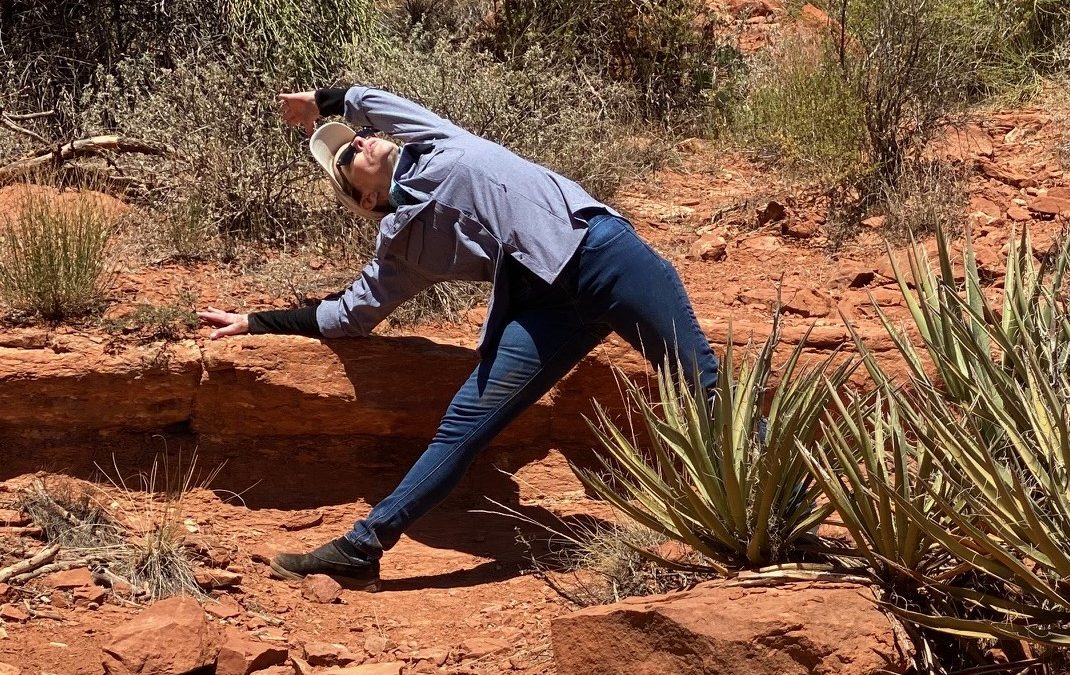
Mar 28, 2023 | Sedona Yoga Festival Teacher Feature
6 Ways to Fall in Love with Your Yoga Practice
by SYF2023 presenter Nancy Gerstein
For years I loaded my yoga lesson plans with novel sequences and philosophy aperitifs, and I believed I was teaching from the heart. Still, my home practice felt more like I was writing a one-hour script than examining my daily flow of consciousness. Then came the time when my yoga practice, the very thing I depended on for a clear head and able body, wasn’t fulfilling the contract. My heart was uncommonly weary, and I felt ungrounded, disconnected, and heavy with sadness.
The Dreaded Obstacles to Practice
If you’re human, you’ll find an excuse for not practicing yoga. I’m too tired, I’ll do it before bedtime, my kids, spouses, roommates, or pets are in the way.
If you’re looking for even more excuses, the Yoga Sutras of Patanjali are way ahead of you. According to the ancient text written some 1,800 years ago, the main obstacles to practice are illness, misperceptions, mental and physical pain, unsteadiness of the body, doubt, cravings, dullness, laziness, failure, sadness and frustration, and irregular breath. At one time or another, I’ve found myself using every one of these excuses, which is like saying, “I don’t practice yoga because I’m not flexible.”
Your Practice, Your Rules: 6 Tips for Falling in Love (and staying in love!) with Your Yoga
Create a Practice that Supports You. A home practice lets you cater to your needs alone. Get clear about your intentions: sit for a few minutes and ask yourself the important questions. For instance, do I want to soothe a busy mind, work out the kinks in my shoulders, or relieve today’s digestion issues?
Begin with centering. Sit still, close your eyes, and connect with your body. Drop your sit bones, lift your spine, and relax your face. Breathe, connecting with your physical and mental consciousness. Wait for your inner cue to begin movement.
Start Small. Most of us don’t think we have time for a daily practice. But a practice can be any length you want it to be. You can build a habit with just 5-10 minutes a day, lengthening the time as needed.
Yoga gear is optional. You can do yoga on a mat, your carpet, or a bare floor. If you don’t have blocks, use books. If you don’t have a strap, use a belt or towel.
Include all the movements of the spine. Moving the spine in all directions includes forward bends, backbends, side bends, twists, and elongating the spine. Move slowly, letting your breath be your guide.
Give thanks. At the end of your practice, take a moment to sit in gratitude for your body, your health, your loved ones, and all the gifts in your life. Gratitude is transformative; it leads to contentment and appreciation for what you have, instead of what you’re lacking.
Keep It Interesting, Your Way
Once you’ve established the habit of practicing, try a new twist to keep your yoga feeling lit.
- Include pranayama. Start out strong with the bhastrika breath to elevate your energy and productivity of your practice. In a seated pose, exhale and pull the navel center and pelvic muscles in and up; inhale and release the muscles in the pelvic region, widening the belly and back. Continue for 8 to 10 breaths. After a few breaths, you’ll feel the heat turn on from the solar plexus, the body’s power source.
- Study the eight limbs of yoga.When you learn that asana is one of eight limbs on the yogic path, you’ll see your practice and your life in a whole new light.
- Add (or subtract) music.If you already use music in your practice, try a different kind of music, or subtract the music and listen to your breath, nature, or the sounds of your environment.
- Seek Out Like Minded Souls. Try different yoga classes and teachers, or attend yoga festivals where you’ll find hundreds of like-minded souls.
They say, the more you practice yoga, the more you’ll want to practice yoga. Fall in love with taking care of yourself. I can’t think of a better way to start your day and celebrate life.
Learn from Nancy in person at our 10-year anniversary celebration this April! Passes are available here. You can learn more about Nancy and other presenters here.
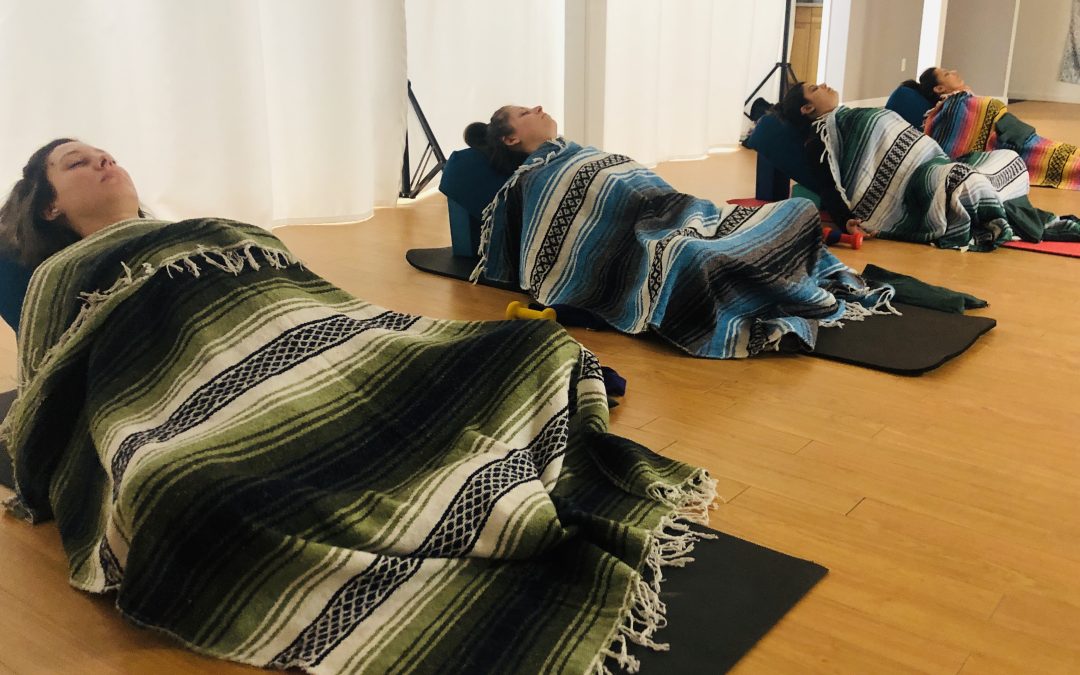
Mar 27, 2023 | Sedona Yoga Festival Teacher Feature
4 Yoga Poses for Opening the Heart Center
by SYF2023 presenter Toni Ferrarie
The heart space is an important energy center in the body. It is responsible for our emotions, including love, compassion, and forgiveness. When the heart center is open, we feel confident and secure in ourselves and our relationships. We are able to give and receive love freely. However, when the heart center is blocked, we may feel closed off, alone, and afraid. We may have trouble trusting others or feeling like we are worthy of love. Practicing yoga can help to open the heart center and promote positive emotions.
These four yoga poses are beginner-friendly and can be practiced by anyone. Give them a try!
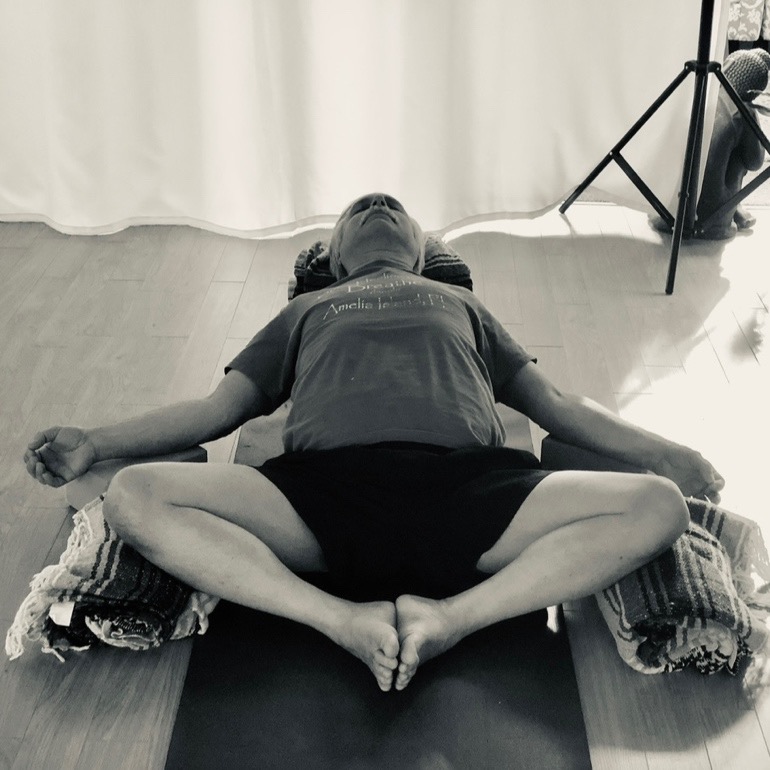
The first pose is a Restorative Yoga supported heart-opener pose. This pose, or asana, is a great way to open your heart and practice deep relaxation. To begin, place a bolster or firm couch cushion horizontally on your yoga mat, lift one end and place a block on its side under that end of the bolster, forming a “slope”. Lie down so your back is against the low side of the slope, place your head at the top of the high end. Bring your legs into a comfortable position, such as butterfly, legs out straight or bent knees. Palms are up and about 45 degrees from your waist. Stay here for 5-10 minutes, breathing deeply and allowing yourself to relax into the pose.
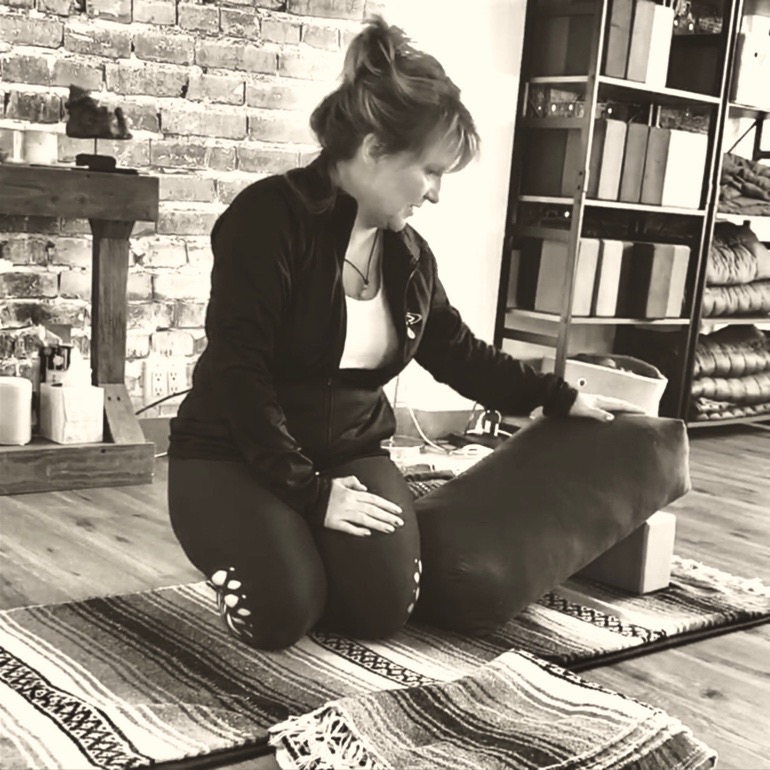
Three more beginner-friendly poses you can also try:
Cat-Cow Pose
Cat-cow pose is a great short sequence to open up your heart space while releasing tension in the back and between the shoulder blades. To do this pose, start on your hands and knees with your palms flat on the ground. As you inhale, arch your back and look up toward the ceiling. As you exhale, round your back and tuck your chin toward your chest. Repeat this sequence a few times, moving slowly and smoothly with each breath.
Cobra Pose
Cobra pose provides a soothing stretch through the lower back and allows an opening up of the heart space without stressing the knees. To do this pose, lie flat on your stomach with your feet hip-width apart and your palms flat on the ground next to your shoulders. As you inhale, press into your palms and lift your chest off of the ground. Keep your shoulders down, away from your ears, as you hold the pose for a few deep breaths.
Bridge Pose
This asana releases the hips and abdominal area and provides space in the heart center. To begin, lie down on your back with feet flat on the floor and arms by your sides. Bend your knees and place your feet hip-width distance apart. As you inhale, press down into your feet and lift your hips toward the sky, extending your chest forward as you do so. Clasp your hands together under your body and interlace your fingers, if you can reach them comfortably. If not, no worries! You can always place a yoga block or folded blanket under your lower back for support instead. Hold this pose for 30 seconds to 1 minute then slowly release back to starting position on an exhale
These four yoga poses are simple but effective ways to begin opening the heart center. They can be practiced by anyone, regardless of experience level. Start with one pose per day and see how you feel! You may find that you experience more positive emotions and increased self-love as you make opening the heart center part of your regular yoga practice.
Learn from Toni in person at our 10-year anniversary celebration this April 27–30! Passes available here.
—
 Toni Ferrarie is a Certified Yoga Educator and Instructor, E-RYT/YACEP. She is a Certified Ayurveda Practitioner and a Certified Mediation Instructor. She is the founder and owner of The Breathing Room Yoga and Wellness in Riverdale, NJ and the founder, owner and yoga retreat and group wellness travel leader for Live Breathe Travel located in Riverdale and West Milford, NJ. She is a deeply spiritual human and a true believer that Kindness is the way and Love is the answer! She has been practicing yoga and meditation for as long as she can remember! You can contact her through her studio at contactus@theBRyoga.com.
Toni Ferrarie is a Certified Yoga Educator and Instructor, E-RYT/YACEP. She is a Certified Ayurveda Practitioner and a Certified Mediation Instructor. She is the founder and owner of The Breathing Room Yoga and Wellness in Riverdale, NJ and the founder, owner and yoga retreat and group wellness travel leader for Live Breathe Travel located in Riverdale and West Milford, NJ. She is a deeply spiritual human and a true believer that Kindness is the way and Love is the answer! She has been practicing yoga and meditation for as long as she can remember! You can contact her through her studio at contactus@theBRyoga.com.
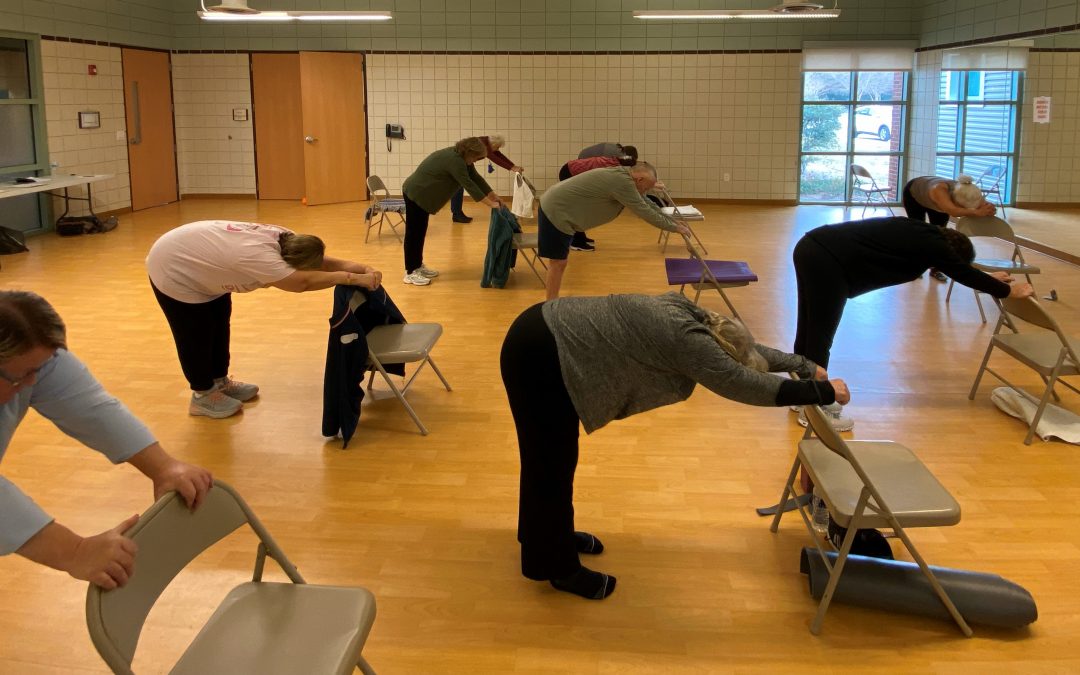
Mar 27, 2023 | Sedona Yoga Festival Teacher Feature
Inspiration Through Mindful Chair Yoga
by Jeanne & John Adams Owners/Directors of Inner Connections Yoga & Wellness
Asanasthah sukham hride nimajjati
One who is established in a comfortable posture while concentrating on the inner Self, naturally becomes immersed in the Heart’s Ocean of bliss.
– Siva Sutras III, 16 (translation by Mukunda Stiles)
One by one, students enter the room. Sometimes they enter with a friend, neighbor, or a family member who is also taking the class. They exchange simple pleasantries and then find their seats.
Mindful Chair Yoga invites people to discover and reconnect to the Heart’s Ocean of Bliss through the 8 limbs of yoga, guided breath-based movement, and connection to various aspects of mindfulness throughout the class. Once you begin practicing Mindful Chair Yoga, you start to feel a sense of ease and relaxation flow through your body. Over time, you notice the tension that once overtook your muscles and joints begins to release, and basic tasks of daily life are once again possible.
Chair yoga helps you feel stronger and offers mindfulness as an inherent part of a yoga practice that flows into your life. Focusing on movement, breathing, and on the body’s response to movement creates a moving meditation that promotes relaxation, reduces stress, and improves mental clarity. Like other forms of movement, Mindful Chair Yoga helps improve mood and confidence and relieve anxiety and depression.
Mindful Chair Yoga is a healing practice that is accessible and fun. It can be as challenging as a more traditional yoga class and is a great option for people with physical limitations such as multiple sclerosis, cardiovascular disease, and pulmonary disease. Healthy movement at any level and for anyone facing a health challenge keeps you motivated and provides a feeling of accomplishment. People of all ages who want to try something new can also benefit from it. Whether you are injured, lack mobility or flexibility, have been diagnosed with a chronic disease, overcoming an illness, are pregnant, use a wheelchair, or find yourself seated for more hours than you care to count, Chair Yoga improves your health and well- being. Yogis often quip, “If you can breathe, you can do yoga!”
Pranayama (breathwork) plays a powerful role in reducing stress, reinvigorating energy, and strengthening concentration. Scientific research is showing that mindful breathing—paying attention to your breath and learning how to direct it—is one of the most effective ways to lower everyday stress levels and improve a variety of health factors ranging from mood to metabolism. According to one of our teachers, Rolf Sovik, “The goal is to shape automatic breathing so that it flows optimally—in a deep, smooth, and effortless rhythm.” By bringing awareness to the breath, you learn to reverse stressful breathing patterns and relax tense nerves, clearing the way to quiet the mind.
Linking breath with movement invites you to connect more deeply with your anatomy and physiology. In yoga breathing, we often inhale during expansive movements and exhale during contractive movements.
This follows the same pattern of expansion and contraction of your respiratory diaphragm and lungs as you breathe. Hence, the pattern of breathing in yoga follows the same pattern as your body. The result is that you connect with yourself on yet another level in your yoga practice.
Once the qualities of breath are established in your practice, you utilize the flow of pranayama to connect body and mind. Breath is the vehicle that links the body to the mind and creates the synergy to connect to a state of peace, calm, and relaxation. By consciously connecting breath to movement, the mind becomes quiet and free from unsettledness.
Chair yoga helps reduce pain. When we move in a healthy way, it prompts the body to release natural painkillers like endorphins. Chair Yoga can help people with chronic pain by improving flexibility, reducing inflammation, and helping them cope with their pain mentally. For example, establishing a deep slow flow of breath and visualizing the pain leaving the body on each exhalation can be applied outside of the class to cope with pain and discomfort.
When you practice Chair Yoga you sleep better. Mindful movements have been known to create a more positive outlook on life, which in turn reduces stress and headaches and improves sleep – creating a mind-body experience- and connects us to the inner Self. You can also use pranayama techniques to help you rest more comfortably and to fall asleep.
There are many other benefits experienced when using a chair for seated and standing balancing yoga poses, such as increased circulation, feelings of well-being, and decreases in blood pressure, anxiety, inflammation, and chronic pain. Students often report improved mobility, reduced pain, greater flexibility, and increased happiness and peace as they feel more comfortable in their body, mind, and spirit through the practice of Chair Yoga.
Throughout Mindful Chair Yoga classes, we emphasize the practices of mindfulness, encompassing intention, attention, awareness, acceptance, being present, and letting go of what does not serve you. To live mindfully is to live in the moment and reawaken oneself to the present moment, rather than dwelling on the past or anticipating the future. To be mindful is to observe and label thoughts, feelings, and sensations in the body in an objective and non-attached manner. Mindfulness is a tool to help you let go of self-criticism, judgment, and analysis and replace them with curiosity, kindness, and compassion.
Once meditation arrives at the end of practice, you have applied Patanjali’s 8 limbs of yoga, practiced animating the body with breath, and implemented mindfulness – all to immerse in the Heart’s Ocean of Bliss. Mindful Chair Yoga students leave the room changed; they describe themselves as feeling more peaceful, connected, grounded, open, and aware.
Explore the benefits of yoga for all with Jeanne and John in person this April! Passes available now.
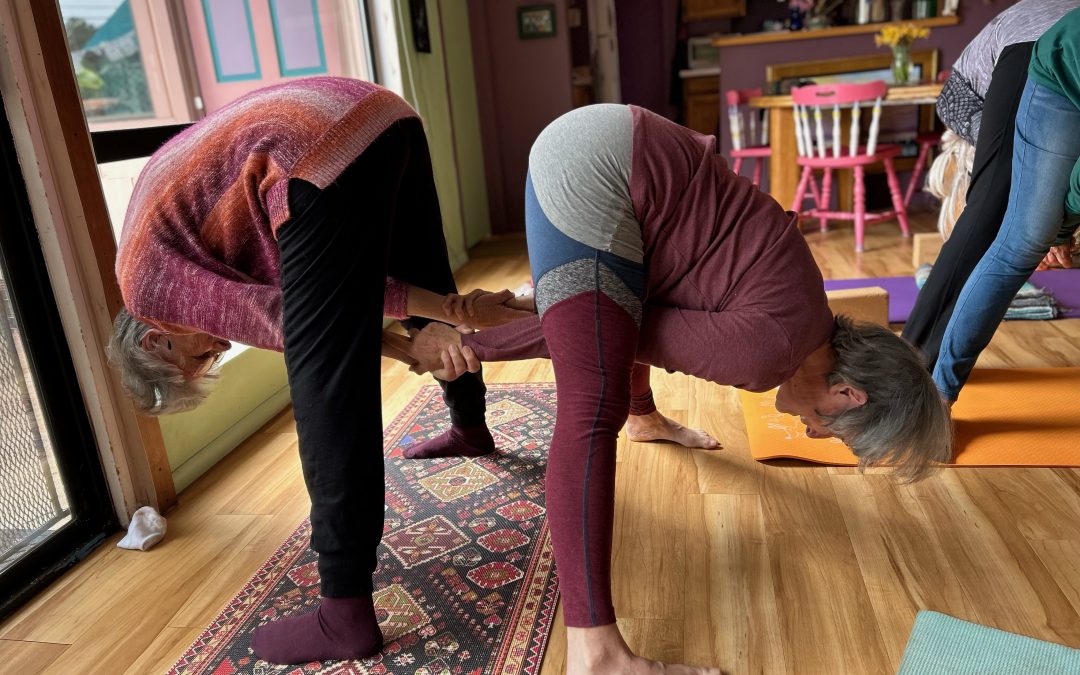
Mar 27, 2023 | Sedona Yoga Festival Teacher Feature
The Power of Functional Movement & Partner Yoga
by SYF2023 presenter Cheryl “Cherlita” Brenman
Partner Yoga is a joyful blissful way to do yoga! It helps us to develop our communication skills, stretch in deeper ways by using the leverage of our partner, and have fun. Utilizing our all the skills and tools we learn in yoga: breath, alignment, surrender and non effort, it slows us to find our inner child and have fun. It is different than Acro yoga, as yogis of all ages and skill can do it and receive the benefits without strain. It is one of my favorite type of yoga classes to do and teach Join me in a light hearted and fun, yet deep class at the festival this year that is guaranteed to leave you feeling blissed and smiling.
Functional Movement is just what the name implies, “movement for life”. As we go through life, our range of motion, ROM, often gets compromised from injury or just lack of movement. Our jobs are often sedentary and and movement becomes habitual and repetitive. Our posture becomes contracted or over extended due to bad habits, creating the sensation of pain and lower energy levels. This movement series, which I have been practicing since 1995, is an antidote to these problems. It takes all joints through their range of motion with no strain. It is suitable for all ages, but particularly valuable for those of us 50+. The restorative and therapeutic and preventative qualities of this work have kept me limber and flexible into my seventies!
Support movement for life — both in partners and not — by joining Cheryl at SYF2023 this April! Learn in-person just how incredible partner yoga can be, and set up a practice to sustain you as the years past. Passes available now!
